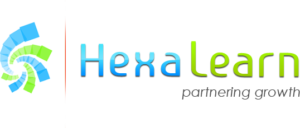Understanding IoT In The Educational Context
From tailored learning experiences to increased campus security and operational effectiveness, the Internet of Things (IoT) is redefining educational institutions’ way of operating and interacting with students, teachers, and administrators. IoT describes a system of devices that gather, process, and share information with little or no human intervention. Some examples include smartboards, wearables, biometric devices, environmental sensors, and others. IoT in education ecosystems can provide real-time monitoring, instant communication, and automation—allowing institutions to maximize both academic and administrative functions.
The Benefits Of Using IoT In Education Ecosystems
1. Supporting Personalized Learning
The greatest impact of IoT on education comes from their aid in providing personalized support in learning. IoT devices such as smart tablets, wearable devices, and interactive software track student behavior, performance, and attendance in real time. Teachers are able to leverage this information to modify lesson plans, deliver specific resources, and discover learning gaps early.
For instance, an IoT-integrated learning platform can scan how much time a student spends on every subject, identify repeated errors, and suggest precise learning modules to correct them. Such a high degree of personalization not only enhances academic performance but also increases student confidence and motivation.
2. Developing Smart Classrooms
IoT is transforming classroom settings into more interactive, efficient, and responsive ones. Cloud-synced smartboards, voice-activated assistants, and occupancy sensors that automate the control of lights and temperature are converting rigid classrooms into dynamic learning spaces.
Attendance can be tracked automatically through RFID tags or facial recognition, saving precious time and reducing errors. Teachers can also use the function of IoT-based devices for real-time sharing of class notes, live polling, and collaborative learning—making lectures interesting and more interactive.
3. Enhancing Campus Security And Safety
Student and staff safety is a top priority for schools and IoT has an important role to play in enhancing campus security. IoT-based surveillance systems, smart locks, and access control systems track buildings in real time and can send alerts in case of emergencies.
Biometric and RFID-based systems guarantee that only approved persons are allowed access to certain areas, while IoT-connected emergency response systems provide instant alerts during emergencies such as fires or lockdowns. The outcome is an active, data-driven approach to managing safety, improving physical and emotional security on campus.
4. Maximizing Administrative Operations
IoT is just as useful in automating administrative and facility management processes. Smart meters and sensors have the ability to maximize energy consumption by managing occupancy and timing in relation to lighting, heating, and cooling—yielding a significant cost advantage.
IoT solutions are also useful for asset and inventory management. Connected systems can monitor the location and usage of lab equipment, audiovisual equipment, and even library books, triggering alerts for maintenance, shortages, or overdue returns. These efficiencies save manual workload and release resources for academic priorities.
5. Enabling Remote And Blended Learning
With the increasing adoption of remote and hybrid models of learning, IoT facilitates unproblematic fusion of virtual and physical learning environments. Smartboards can stream lessons live and IoT-enabled Learning Management Systems (LMSs) can monitor online attendance, provide individualized feedback, and monitor student performance in real time.
For students with special educational needs, IoT helps open the doors to education by making it more inclusive. Connected hearing aids, voice-to-text devices, and IoT-based assistive applications enable learners to enjoy quality education—anytime, anywhere.
6. Offering Data-Driven Insights For Teachers
IoT collects an abundance of data that can be processed to provide actionable insights. Administrators and teachers can monitor attendance patterns, performance data, and behavioral trends to pinpoint students at risk and make timely interventions.
In addition, class or department-level aggregated data can uncover larger trends that can guide curriculum development, pedagogy, and resource planning. Predictive analytics driven by IoT can even predict student success and retention rates—allowing institutions to constantly improve.
Challenges And Considerations
Even with its numerous benefits the integration of IoT in education ecosystems does present challenges:
1. Data Privacy And Security
The more information IoT gathers the more stringent cybersecurity is needed. Institutions have to comply with privacy regulations such as GDPR, FERPA and others.
2. Infrastructure Needs
Installation of IoT systems needs solid internet connectivity, dependable hardware, and technical support round the clock—all of which cost a great deal of money.
3. Digital Equity
Not everyone has equal access to IoT devices and infrastructure, including not all students and schools. Closing this digital divide is critical so that IoT can benefit all, not merely the privileged few.
Conclusion: The Future Of Connected Learning
IoT is enhancing the educational experience but fundamentally changing it. Since it can produce real-time insights, streamline processes, and offer personalized learning experiences, IoT acts as a solid foundation for any modern educational environment. As usage rises, education institutions need to shift toward creating IoT frameworks that promote security, equity and scalability while encouraging innovation. By adopting the possibility of IoT in an environmentally sustainable manner, educational institutions and schools are able to craft future-proof environments that empower students, teachers, and administrators toward a brighter, wiser, and more connected learning future.

HEXALEARN SOLUTIONS PRIVATE LIMITED
ISO certified learning & software solutions company.

